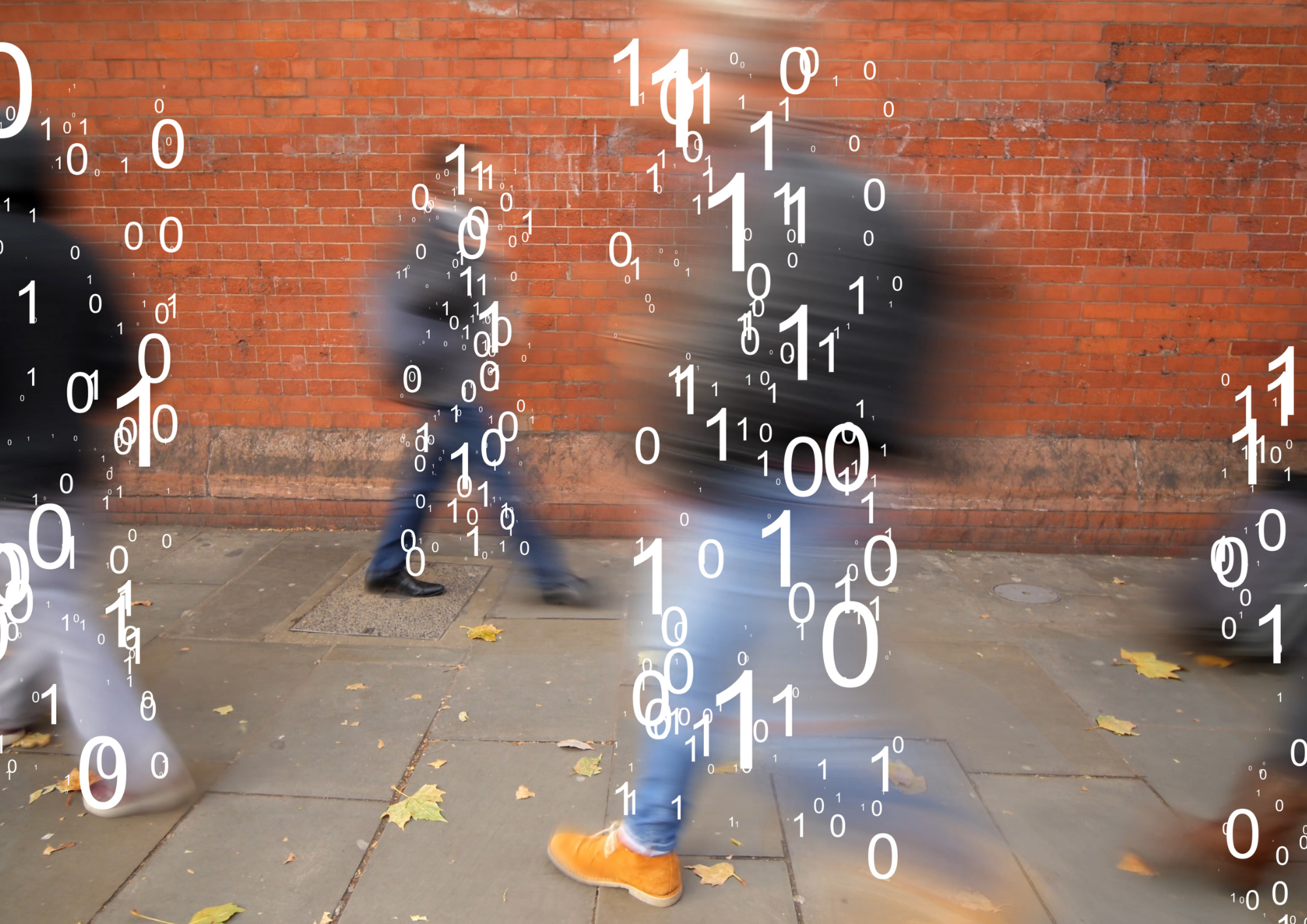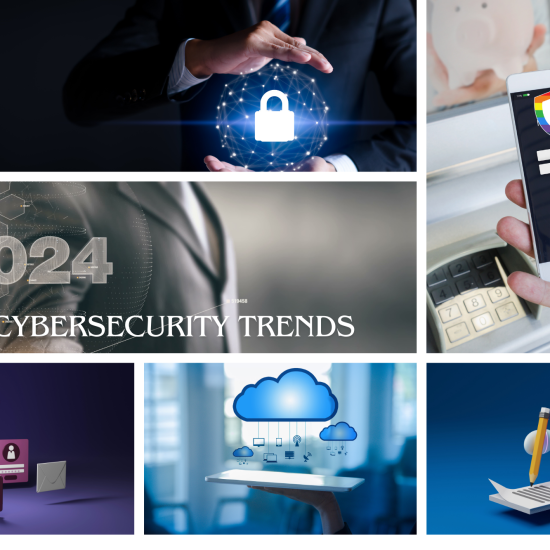Data Protection vs. Data Privacy: What is the difference?
The digital information era has seen exponential growth in terms of data being collected, managed, and distributed across organizations. Websites, applications, and social media platforms often collect and store personal data about users in lieu of providing free services. However, some applications and platforms may exceed users’ expectations for data collection and usage, leaving users with less privacy than they realized. Other apps and platforms may not place adequate safeguards around the data they collect, which can result in a data breach that compromises user privacy. Data privacy is a serious concern and consumers have started looking at the privacy rules that businesses follow before they associate with the company. Organizations need to use data protection practices to demonstrate to their customers and users that they can be trusted with their data.
On the other hand, data breaches and cybercrime are becoming major impediments and can lead to potential loss of customers’ trust and business value. It is thus vital for businesses to comply with the regulations of data privacy and adhere to strict data protection practices. Data Privacy and Data Protection have been used interchangeably however, they are a huge distinction between both. Let us dive deep and understand them in detail.
In this article, you will read:
What is Data Privacy?
What are Data Privacy laws?
What is Data Protection?
What is Data Security?
Understanding these concepts with an example.
Key differences between Data Privacy and Data Protection
Why does it matter to know?

What is Data Privacy?
Data privacy generally means the ability of a person to determine for themselves when, how, and to what extent personal information about them is shared with or communicated to others. This personal information can be one’s name, location, contact information, online or real-world behavior, personal health information (PHI), and personally identifiable information (PII) including financial information, medical records, social security or ID numbers, names, birthdates, and contact information ensures that the data is kept secure.
What are the laws of data privacy?
Regulatory legislation drives many data privacy practices because government entities recognize the potential negative effects of data breaches on citizens and the greater economy. Numerous laws require and enforce data privacy functions and capabilities.
In European Union (EU)
The EU has the General Data Protection Regulation (GDPR), which governs the collection, use, transmission, and security of data collected from residents of its 27 member countries. GDPR is a set of data privacy laws enacted by the EU to ensure consumer privacy. GDPR regulates areas such as an individual’s ability to consent to provide data, and how organizations must notify data subjects of breaches of individuals’ rights over the use of their data. These laws force organizations to disclose their data collection efforts and help ensure consumer privacy by giving consumers the right to determine how their data can be used, while also imposing penalties upon organizations for data breaches. It gives more power to an individual to control their data. The GDPR focuses on newer areas like Privacy rights, data security, data control, and governance. GDPR applies to:
1. A company or an organization that is established or has a branch office in the EU and processes personal data as a part of its activities.
2. A company that is operating from outside the EU but having or operating or monitoring the personal data of an EU citizen is also required to follow GDPR.
In the United States of America
In the U.S., laws, and regulations concerning data privacy have been enacted in response to the needs of a particular industry or section of the population. Examples include:
- Children’s Online Privacy Protection Act (COPPA) gives parents control over what information websites can collect from their kids.
- Health Insurance Portability and Accountability Act (HIPAA) ensures patient confidentiality for all healthcare-related data.
- Electronic Communications Privacy Act (ECPA) extends government restrictions on wiretaps to include electronic data transmission.
- Video Privacy Protection Act (VPPA) prevents the wrongful disclosure of an individual’s PII stemming from their rental or purchase of audio-visual material.
- Gramm-Leach-Bliley Act (GLBA) mandates how financial institutions must deal with the individual’s private information.
- Fair Credit Reporting Act (FCRA) regulates the collection and use of credit information.
While some U.S. data protection laws are enacted at the federal level, states may also ratify and enact data privacy laws. Examples of state-level data privacy laws include the following:
- California Consumer Privacy Act (CCPA)
- California Privacy Rights Act (CPRA)
- Virginia’s Consumer Data Protection Act (VCDPA)
- Colorado Privacy Act (CPA)
- New York SHIELD Act
- Utah Consumer Privacy Act (UCPA)
- Connecticut Personal Data Privacy and Online Monitoring Act (CPDPA)

What is Data Protection?
Data protection is the mechanism that enforces the policies and regulations into motion and prevents unauthorized access or use. It is the company’s responsibility of protecting the data and ensuring the level of privacy set by the users. The company must take precautions for protecting the data. Data protection is concerned with keeping information safe from hackers. It ensures that your data is protected from unethical intervention and access.
What is Data Security?
Data security is the concept of protecting digital data from theft, corruption, or unauthorized access throughout its entire lifecycle:
- Creation
- Storage
- Use
- Sharing
- Archiving
- Destruction
Data security involves everything from the physical security of the storage devices and hardware to administrative access controls and the security of software applications.
It also includes organizational policies and procedures.
Correctly implementing data security can protect your data from cybercriminal activities, insider threats, and human error.
Various tools and technologies help protect your data, including:
- Redaction of sensitive files
- Data masking
- Encryption
- Automated reporting
These tools can help keep your data secure while supporting you in other areas, like streamlining your audits and complying with regulatory requirements.

Understanding these concepts with an example
Let us understand the concepts of Data Privacy, Data Security, and Data Protection using an example.
Example No. 1: Data Privacy
SimplySuperb.com sells unique products via its online e-Commerce application and it collects the following data of its online shoppers such as:
- Email addresses and log-in details
- Shipping addresses
- Billing addresses
To ensure proper handling of personal data and to give individuals control over access to and sharing of their data, SimplySuperb.com does the following:
- It allows its customers to unsubscribe from its email marketing & newsletter list.
- It does not disclose its customer’s email addresses and purchase data to a third party without getting its customer’s consent.
- It stores customers’ purchase information by data storage periods determined by applicable laws.
These efforts are all part of SimplySuperb.com’s data privacy strategy.
Example No. 2: Data Security
The executives recently decided to update SimplySuperb.com’s data security policy. As a result, they hired a data security analyst who brought to their attention that more staff members had access to shoppers’ information than was necessary — weakening the company’s overall data security.
After reviewing which staff members needed access to this information, they reduced the number of “need to know” players from 20 to only five. In addition, they allowed access to data under special circumstances.
By reducing the number of staff members who could access shoppers’ data by nearly three-quarters, SimplySuperb.com significantly strengthened its data security plan.
Example No. 3: Data Protection
SimplySuperb.com is a national company beginning to broaden its reach into the international market. However, a data protection analyst recently pointed out a potential issue.
Suppose SimplySuperb.com shopper data were suddenly lost or destroyed by a cyberattack or human error. In that case, it could lose millions of dollars in revenue before its current data protection plan could restore the data to its former level.
SimplySuperb.com executives weighed the costs of updating their plan against the benefits and decided it would be worthwhile to invest in the analyst’s suggestions to strengthen the data protection plan.
Some of the data protection analyst’s suggestions included:
- Running tests on data reinstatement speeds for different scenarios
- Creating cloud backups
- Updating the backed-up data regularly
- Using data masking
Key differences between Data Privacy and Data Protection
There are some notable differences addressed by an expert team of Forbes Technology Council mentioned here:
1. Having One Doesn’t Ensure The Other
Data protection is focused on protecting assets from unauthorized use, while data privacy defines who has authorized access. One can say that data protection is mostly a technical control, while data privacy is more of a process or legal matter. One doesn’t ensure the other, and we need both to work together as a proper control mechanism.
2. One Addresses Regulations, and The Other Mechanisms
Data privacy is the regulations, or policies, that govern the use of an individual’s data when shared with any entity. On the other hand, data protection is the mechanism — that is, the tools and procedures — to enforce the policy and regulation, including the prevention of unauthorized access or misuse of the data that I agreed to share.
3. The User Controls Privacy; Companies Ensure Protection
The most important distinction people should know about data privacy and data protection is who controls which part. Data privacy controls are mostly given to users. Users can usually control which data is shared with whom. Data protection is mostly a company’s responsibility. Companies need to make sure that the level of privacy their users have set is implemented and data is protected.
4. Safety From Sales Vs. Safety From Hacks
Data privacy is about keeping your information from being sold or shared, while data protection focuses on keeping that information from hackers. It’s important to explain this difference to people and have a policy as to what your company does for each type of data intrusion.
5. Ensuring Your Data Is Only Accessed As Intended
The distinction between privacy and protection boils down to whom we intend to share your data with versus how we plan to protect your data from everyone else. At the data access level, they mean the same thing. But in reality, protecting data from unauthorized access requires going beyond a simple ACL scheme and defending against all the vulnerabilities of the underlying systems.
6. You Can’t Have Privacy Without Security
Data privacy is about what people who have collected your data lawfully can and should do with it and what control you have over that retention and use of data. Data protection ensures that your data is safeguarded from unlawful access by unauthorized parties. It is hard to have true data privacy without data security, because why would anyone safeguard the data they stole?
7. Professional Expertise Is Needed
Data protection focuses on protecting organizations’ assets. It is mostly about keeping threats out. Data privacy, on the other hand, is all about what is done with people’s data. It deals with how data is handled and managed inside the organization. Privacy teams are usually made of experts with backgrounds in law, policy-making, and some engineering.
8. Privacy Questions Should Be Answered First
Data protection is the act of safeguarding the data already obtained, no matter what it is (PII, payment, or proprietary). Thus, we often overlook and ignore the fact that data privacy precedes the question of protection. The first step of risk avoidance is questioning if submitting your data is necessary at all.
Why does it matter to know about data privacy and data protection?
Knowing the difference between data privacy and data protection matters because they are deeply woven into issues that are crucial for businesses and organizations. Since companies are collecting more information about their customers than ever before, compliance with privacy laws, and how companies handle personal and sensitive information, and how they comply with privacy laws significantly impact their reputations. Privacy controls have become a serious concern and companies face potential legal risks should they fail to comply with the necessary laws and regulations in different jurisdictions. In addition to penalties and fines for non-compliance, companies may also lose out on potential business or partnership opportunities. Poor data privacy and data security postures have opened the doors to data breaches. There is an inherent need for businesses to consider privacy compliance from a business perspective, looking at the potential for operational risks to their business as they become increasingly dependent on data. They should also adopt a resilience mindset governing how they would respond to and recover from any major data breach event.
Rainbow Secure can help secure your customer interactions, data sharing, and employee logins that have access to customers’ sensitive data. Rainbow Secure offers multilayer graphical login solutions, secure business email, and encryption for achieving data health and managing data privacy. Businesses can use it to securely administer data regardless of whether the data is in the cloud or on-premises. Rainbow Secure enables businesses to keep their data in compliance with data privacy, data security, and data governance best practices, laws, and regulations. It lets organizations classify data, secure it and restrict its access. To know more, schedule a call today or email us at hello@rainbowsecure.com.







